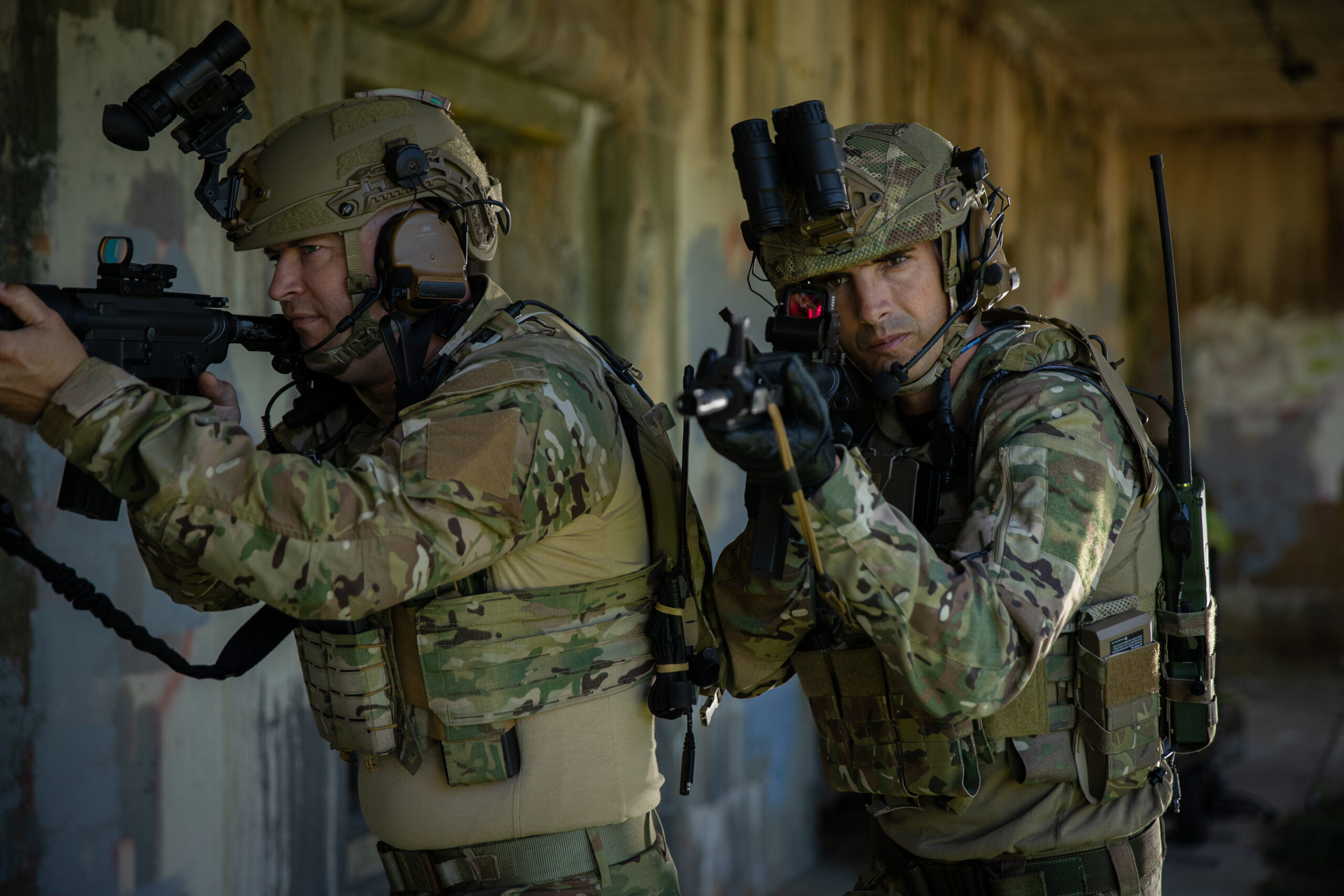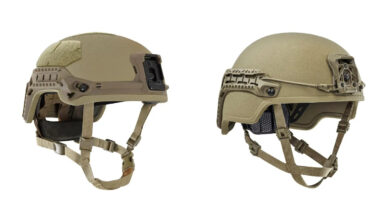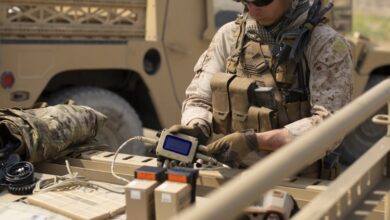Galvion’s Warfighter Lab Critical in Developing Integrated Helmet Systems
The Warfighter Lab is transforming the way military gear is designed, tested, and optimized, putting soldiers’ needs and feedback at the forefront of innovation.
As the battlefield continues to evolve, so too must the equipment that protects and enhances the capabilities of those on the front lines.
Galvion, a leader in advanced protective gear, has recognized this need for innovation and established the Warfighter Lab — a cutting-edge facility dedicated to transforming how military head systems and other critical technologies are developed, tested, and refined.
Shift Toward Active Protection
The evolution of protective head systems has historically been centered around lighter materials, improving coverage, enhancing fit and comfort, and adding scalability through accessories like shrouds and rail systems.
While these advancements have significantly improved the protective capabilities of helmets, the rapid introduction of new technologies has necessitated a shift in approach.
Several years ago, the concept of “active” protection emerged, built on the idea that helmets needed to move from a purely protective product to a solution that increases survivability and lethality.
These solutions integrate with modern equipment, such as hearing enhancement devices, night vision goggles, head-up displays, sensors, emitters, and computational systems.
As technology continues to advance with innovations like drones, robots, visual augmentation, advanced weapons platforms, and communication systems, the future of head systems is capability-enhancement and integration-focused.
New Approach to End-User Feedback
Great product design relies on end-user feedback, yet one of the challenges in the defense industry is that such feedback is inherently subjective and often related to a “feeling” rather than a quantifiable measure.
Soldiers may describe their experiences with equipment in terms like “that felt tight,” “this was comfortable,” or “that felt a little unstable,” which are difficult to translate into actionable product development decisions.
Recognizing this challenge, Galvion’s Warfighter Lab has been specifically designed to bridge the gap between subjective feedback and quantifiable data, enabling more precise and effective product development.
Testing in an Operationally Immersive Environment
Located in Portsmouth, New Hampshire, Galvion’s Warfighter Lab is equipped with state-of-the-art, custom-designed equipment to measure and record performance under controlled and repeatable conditions in an operationally immersive environment.
Depending on the project, the questions posed, the type of end-user, the environmental conditions required, and the product or system being tested, the Warfighter Lab builds experiment protocols that include layers of simulation ranging from full reality to mixed reality to full virtual reality.

“We want to obtain behavioral responses and performance from the user that reliably reflect what would happen in the field,” explained Dr. Martin Fultot, Manager of Galvion’s Warfighter Lab and an Experimental Psychologist.
“We do that by pushing the boundaries of immersion and suspension of disbelief; by blurring the lines between what is virtual and what is real. For example, the simulated weapon you use is really in your hands and the wall you see is really there.”
The Warfighter Lab’s immersive simulations allow Galvion to capture high-quality data that reflects real-world neuromuscular responses and processes. This data is crucial for developing new systems that meet the rigorous demands of modern military operations.
Accelerating Innovation: The Integrated Helmet System
One of the most significant outcomes of the Warfighter Lab’s work is the development of Galvion’s Integrated Helmet System (IHS).
This system was created in close collaboration with the US Marine Corps, incorporating real-time feedback collected through multiple limited user evaluations. The result is a purpose-built helmet system that provides an integrated head protection platform tailored to the specific needs of the Marines.
One of the critical priorities discovered during feedback sessions was the need for superior stability. Marines voiced a willingness to trade comfort for stability and effectiveness, scoring night vision goggles (NVG) stability as essential.
In response, Galvion’s Engineering, Human Factors, and Warfighter Lab teams worked together in an iterative development process to refine the APEX™ suspension and retention system to ensure unmatched stability without compromising comfort.
The Warfighter Lab played a crucial role in validating the IHS helmet’s stability through rigorous testing under three conditions: helmet only, helmet with NVG, and helmet with NVG and counterbalance. The testing confirmed that the helmet could handle headborne accessories without affecting performance, underscoring the effectiveness of the APEX™ liner system design.

Data-Driven Decision Making
In an era where soldiers are increasingly hyper-enabled with technology, understanding, measuring, and analyzing the impact of new equipment on overall warfighter survivability is essential.
The Warfighter Lab is uniquely equipped to collect the quantitative data necessary to assess the tipping point between increased operational effectiveness and cognitive overload.
How does each new technology impact overall survivability? Does it truly enhance performance, or is it something that we, in theory, believe enhances performance?
By focusing on these critical questions, Galvion’s Warfighter Lab is helping to shape the future of military equipment, ensuring that new technologies truly enhance performance and protect those who serve.
For more information related to Galvion’s IHS, please click here.




